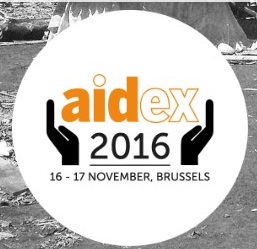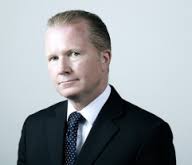
Lifebox at AidEx
Event Director and Founder, Nicholas Rutherford tells us more about this innovative event below.

What is the concept behind AidEx, and why was the conference launched six years ago?
AidEx was launched in 2011 to help the international aid and development community engage with the private sector and network with fellow professionals. There was a need for a forum where A&D professionals could come together to meet and discuss some of the most pertinent challenges facing them today.
When AidEx first launched, the focus was very much on tackling immediate humanitarian and crisis needs, by connecting the international procurement community looking to source relevant products with business. That’s still a key element, but the event has matured and evolved, now focusing as much on sustainable development efforts and economics, and helping to forge long-term partnerships. I think this speaks to a broader shift in discourse, with humanitarian aid and development efforts increasingly interwoven across the world.
What can delegates expect in terms of education, information, and networking?
One of the main elements of the event is the conference, which runs in parallel, attracting high-level speakers and often driving heated debate amongst participants! Every year, we select a theme that reflects broader areas of concern within the aid and development community – our choice of “Localisation” for 2016 chimes with an ever-growing awareness of the need to more directly empower beneficiaries, and make their voices heard in the decision-making process. Speakers addressing this topic in a myriad of different ways will include representatives from the IFRC, UNHCR, UN OCHA, the European Commission, and the International Rescue Committee – among many, many others.
At AidEx there are opportunities to engage everywhere. On the exhibition floor, you’ll find innovative products and services designed to tackle the most pressing medical, WASH, shelter and communications issues faced in an aid or development scenario. If you’re interested in the development work of particular regions, delegates can meet trade and development representatives from specific countries. There are also several different awards which celebrate the best ideas and individuals from within the aid and development community, from our Aid Innovation Challenge and Humanitarian Hero Award, to the respected Aid and Development Journalism Awards.
What do you see as the role of development organisations in the global landscape?
Development organisations are becoming increasingly flexible and open to new opportunities to collaborate and partner outside traditional boundaries. I think there’s a growing realisation that if we are to make progress over the 15 years and achieve all 17 of the new Sustainable Development Goals, the likes of the UN, the European Commission or even international NGOs – who are working under more scrutiny and with fewer funds – will need to work more closely together, not just between themselves but also with the private sector. Businesses of all shapes and sizes can bring enormous value to aid and development in a meaningful way – e.g. lending their sectorial expertise or services, rather than simply donating funds.
What have been some of the best collaborations/experiences that have come out of AidEx?
Over the years, we’ve seen some really strong examples of relationships forged on the exhibition floor resulting in concrete outcomes that have changed lives. For instance, returning exhibitor Dunster House, which makes raised latrines for use in developing countries, met Oxfam at AidEx three years ago. They now work together providing sanitation in South Sudan and Dunster House has also worked with UNICEF in Chad. This kind of partnership which brings together NGO and private sector expertise is exactly the kind of outcome we’re thrilled to see emerging from a conversation at AidEx.
Book your tickets here and follow #AidEx2016 on Twitter for more updates.

